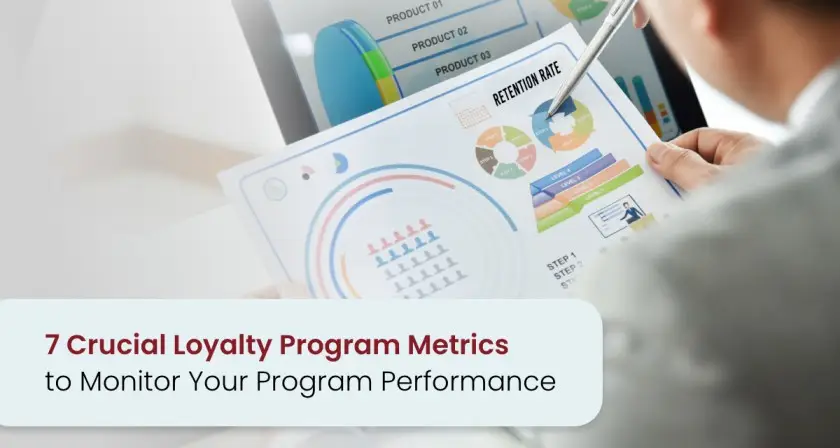Loyalty programs have become an integral part of businesses, offering a strategic approach to building strong customer relationships and driving repeat purchases. However, launching a loyalty program is just the beginning. To ensure its success and effectiveness, you need to monitor key loyalty program metrics that provide insights into its performance.
Loyalty programs are designed to incentivize customers to make repeat purchases, foster brand loyalty, and ultimately increase customer lifetime value. However, without ongoing monitoring and analysis, it can be challenging to gauge the effectiveness of your loyalty program. By tracking and analyzing loyalty KPIs, you can gain valuable insights into the program’s performance and make data-driven decisions to optimize it.
Why Is It Crucial for Brands to Monitor Loyalty Program Metrics?
Using loyalty program metrics to measure its performance enables brands to personalize the customer experience. By analyzing customer preferences, purchase patterns, and interactions with the loyalty program, brands can gain deep insights into individual customer behaviors. This knowledge empowers brands to deliver personalized rewards, offers, and communications that resonate with customers, fostering a stronger emotional connection and increasing loyalty.
Furthermore, benchmarking loyalty program performance against industry standards and competitors is essential for brands to stay competitive. By comparing program metrics and outcomes with similar businesses, brands can identify areas of excellence and areas that require improvement. This competitive analysis helps brands stay abreast of industry trends, uncover best practices, and differentiate their loyalty program, ensuring it remains compelling.
This blog will explore 7 crucial customer loyalty program metrics that every brand with a loyalty program should monitor.
Top 7 Customer Loyalty Metrics:
- Enrollment Rate
- Engagement Rate
- Redemption Rate
- Percentage of Revenue
- Customer Lifetime Value (CLV)
- Churn Rate
- Net Promoter Score (NPS)
Critical Loyalty Program Success Metrics to Monitor Performance
1. Enrollment Rate
The enrollment rate measures the percentage of customers who sign up for your loyalty program compared to the total customer base. This KPI for loyalty programs is crucial for evaluating the program’s growth and determining the effectiveness of your marketing and promotional efforts. A high enrollment rate indicates strong customer interest and engagement.
Enrollment Rate Formula
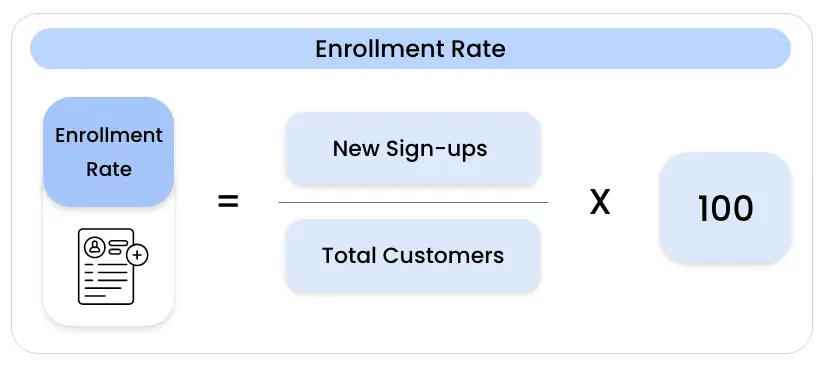
Enrollment Rate = (New Sign-ups / Total Customers) * 100
You can monitor the enrollment rate by tracking the number of customers who sign up for your program over a specific period. Regularly analyzing the enrollment rate can help identify trends and improve your program’s visibility, incentives, and sign-up process.
There are several reasons why your program’s enrollment rate could be low. These include —
- Ineffective marketing strategies or targeting the wrong audience.
- Lack of enticing sign-up incentives or promotional offers.
- Poor visibility or awareness of the loyalty program.
To improve your enrollment rate, consider offering enticing sign-up incentives, such as bonus points, exclusive discounts, or freebies. Additionally, optimize your marketing channels and messages to target potential customers most likely to engage with your loyalty program.
2. Engagement Rate
The program engagement rate measures the level of active participation and interaction within your loyalty program. It assesses how frequently customers engage with program activities, such as making purchases, referring friends, or leaving reviews. To monitor the engagement rate, track the number of program members who engage with your loyalty program within a defined timeframe. This can include making purchases, redeeming rewards, or interacting with program features.
Engagement Rate Formula
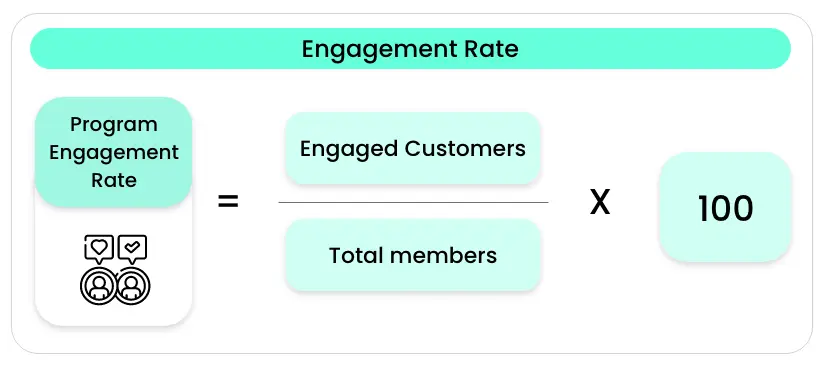
Program Engagement Rate = (Engaged Customers /Total members) * 100
A higher engagement rate suggests customers are interested in the program and taking advantage of the rewards and incentives. A poor engagement rate, on the other hand, shows that your rewards, communication, or overall approach need improvement.
You can enhance program engagement by gamifying your loyalty program. Implement challenges, competitions, and interactive elements to encourage customers to participate actively. In addition, consistently communicate program updates and exclusive offers to keep customers engaged and excited about the program.
3. Redemption Rate
The redemption rate measures the percentage of earned rewards that customers redeem. This metric is tied to program performance. If the redemption rate is low, you should reconsider your loyalty strategy. This is because a high redemption rate indicates that customers find value in the rewards, leading to increased engagement and satisfaction. At the same time, a decline in the redemption rate can be attributed to a lack of relevant rewards or a complicated redemption process.
Redemption Rate Formula
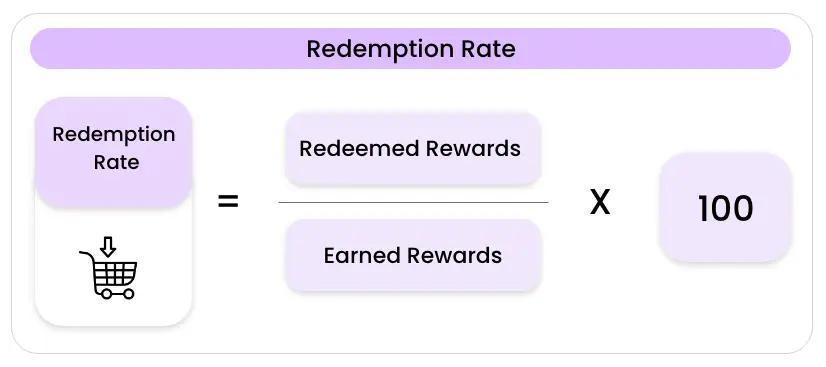
Redemption Rate = (Redeemed Rewards / Earned Rewards) * 100
To improve your redemption rate, simplify the redemption process and offer a variety of attractive rewards that align with your customer’s preferences. Then, communicate the value of the rewards effectively to encourage more redemptions and drive repeat purchases.
4. Percentage of Revenue
One of the major goals of any loyalty program is to increase repeat purchases. The percentage of revenue of a loyalty program helps you understand – if your loyalty program members purchase more frequently than non-members. The average order value measures the average amount customers spend per transaction.
It also helps in calculating the overall health and ROI of your business. For example, if you invest $1,00,000 in a loyalty program, your ideal percentage of revenue should be 80%. Want to calculate the approx percentage of revenue based on your investment? Use our loyalty calculator to measure the impact!
Percentage of Revenue Formula
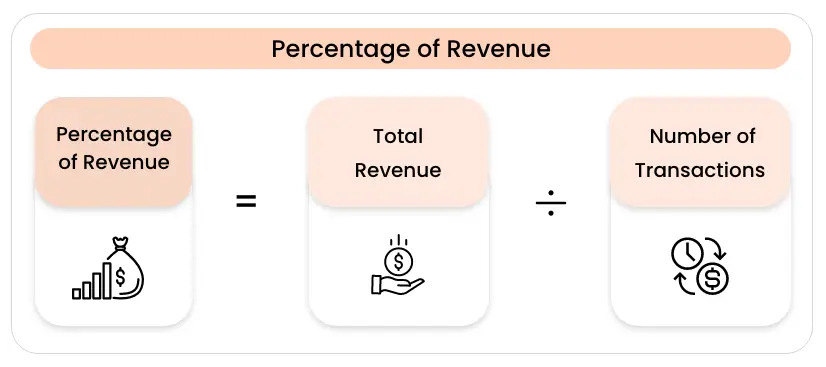
Percentage of Revenue = Total Revenue / Number of Transactions
A low percentage of revenue indicates that your products and rewards offer little value to customers. You can increase the percentage of revenue by introducing tiered rewards, where customers earn higher rewards for reaching specific spending thresholds. In addition, you can implement personalized upselling and cross-selling strategies to encourage customers to add more items to their orders.
5. Customer Lifetime Value (CLV)
Customer lifetime value (CLV) is a vital metric that predicts the total value a customer will bring to your business throughout their entire relationship with your loyalty program. By calculating the CLV, you can assess the long-term profitability of your customers and allocate resources accordingly.
CLV Formula
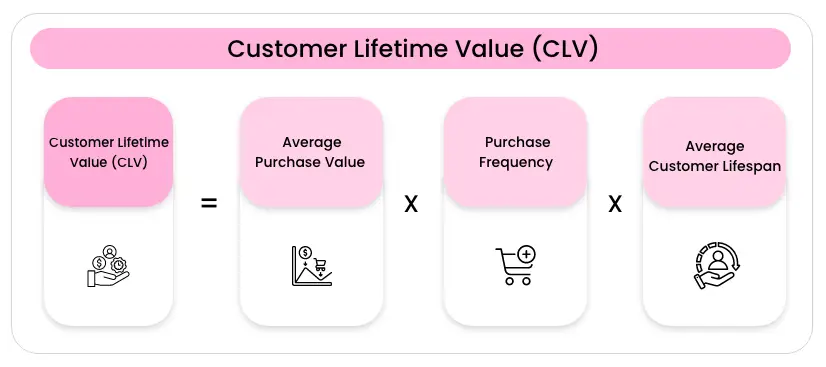
CLV = Average Purchase Value * Purchase Frequency * Average Customer Lifespan
Increasing the CLV requires your program to be completely customer-centric. It needs personalized rewards and exclusive experiences to keep customers engaged and loyal to your brand. To do that, you should continuously analyze and segment your customer base to identify high-value customers and tailor your loyalty program to their needs.
6. Churn Rate
Customer churn rate refers to the percentage of customers who have stopped engaging with your loyalty program over a given period. High churn rates indicate that customers are not finding enough value in your program, leading them to discontinue participation.
Customer Churn Rate Formula
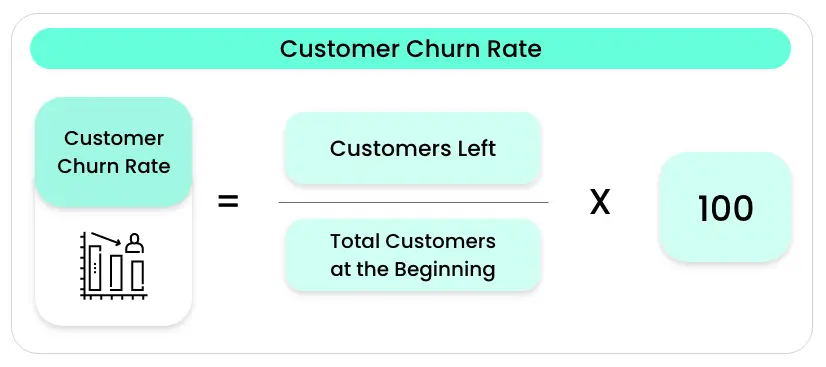
Customer Churn Rate = (Customers Left / Total Customers at the Beginning) * 100
To reduce customer churn, you must first analyze the reasons behind customer attrition. Then, offer personalized rewards and incentives based on individual preferences and purchase history. Implement targeted communication and re-engagement campaigns to win back inactive customers.
7. Net Promoter Score (NPS)
Net Promoter Score (NPS) measures customer satisfaction and loyalty by gauging their likelihood to recommend your loyalty program to others. NPS surveys ask customers to rate their likelihood on a scale from 0 to 10. Customers are then categorized as promoters (9-10), passives (7-8), or detractors (0-6).
NPS Formula
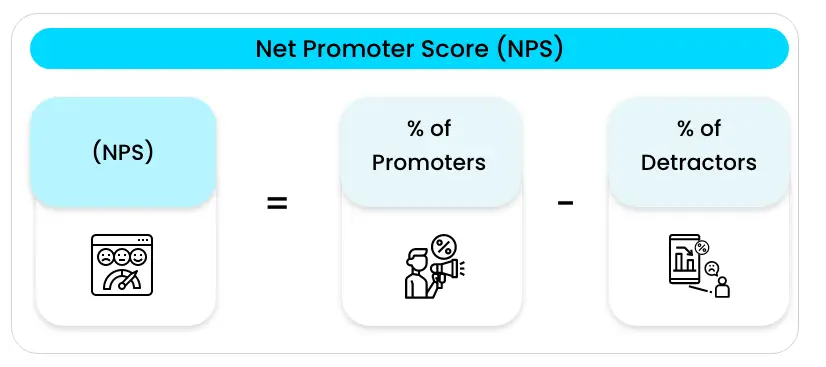
NPS = Percentage of Promoters – Percentage of Detractors
Brands should actively collect and analyze NPS feedback to identify areas for improvement. Analyzing NPS trends can help you address detractors’ concerns and leverage promoters to drive referrals and program growth. For example, you can engage with passives to turn them into promoters and leverage the positive feedback from promoters to attract new customers.
Conclusion
Anyone can launch a customer loyalty program. But its success depends on how well you can execute it. And successful execution of the loyalty program relies heavily on performance analysis. By analyzing and implementing insights gained from customer loyalty metrics, you can fine-tune your program, enhance customer engagement, and drive long-term loyalty. Loyalty programs are not one-size-fits-all, so continuously analyze and adapt your program based on these metrics and the specific needs of your target audience.
Ready to Build Your Loyalty Program With Zinrelo?
Learn how our holistic loyalty platform can transform your business.
